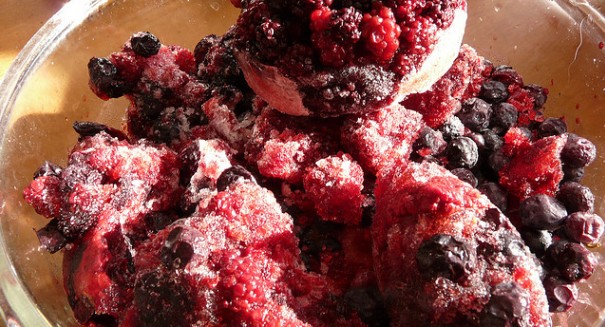
Reports indicate that the FDA is investigating Townsend Farms, located in Fairview, Oregon.
The Centers for Disease Control and Prevention, in collaboration with the Food and Drug Administration, is investigating an outbreak of hepatitis A linked to a frozen berry mix.
Thirty reports of viral hepatitis have come in from five states: Arizona, California, Colorado, Nevada, and New Mexico. The cases have been connected with a frozen blend of berries and pomegranate from Townsend Farms and sold in Costco.
According to the CDC, between April 29 and May 17, illness presented in 30 adults. Of these, nine were hospitalized, but, fortunately, there have been no deaths yet. The specific strain of hepatitis A is rare in the Americas and is more commonly found in North Africa and the Middle East. The berry blend used products from the U.S., Argentina, Chile, and Turkey. The strain is also linked with a 2012 outbreak in British Columbia and a 2013 outbreak in England. Those outbreaks were also linked with a frozen berry blend, but that one used pomegranate seeds from Egypt.
Official action has not yet been taken by the CDC or the FDA and the case is still under investigation. Reports indicate that the FDA is investigating Townsend Farms, located in Fairview, Oregon and the CDC has recommended, but not mandated, that retailers and food service operators not sell the product.
Viral hepatitis includes hepatitis A, hepatitis B, and hepatitis C. Each type has different causes, symptoms, and treatment. According to the Mayo Clinic, hepatitis A is an infection of the liver that is highly contagious. It is most commonly contracted from exposure to contaminated sources of food and water. Milder cases can be naturally addressed by the body without medical intervention and most cases do not result in any permanent liver damage.
Outbreaks of hepatitis A have been linked with a number of food sources. In 2003, there was an outbreak associated with green onions that resulted in hundreds infected and three dead. Another outbreak analyzed in the Journal of Clinical Microbiology focused infections affecting 26 in Southern Italy, concluding that individuals that handle food are the most common source of the virus and the best means of preventing outbreaks. Analysis of random food samples between 1999 and 2013 in Europe found hepatitis A present in 18 items, including shellfish, tomatoes, yogurt, dates, and frozen berries. Contaminated products were located in six countries.
This is not the first hepatitis outbreak and is unlikely to be the last. The CDC and the FDA continue to work on the investigation, expecting more cases of infection to appear in the coming weeks.
hotel near subway